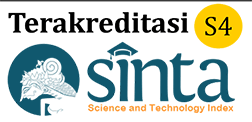Giving nerve and tendon gliding exercises to reduce pain in carpal tunnel syndrome
Abstract
Background: Physical activity in blacksmith workers, which involves repetitive use of hand and wrist muscles, grasping tools, and forging iron, can cause symptoms of carpal tunnel syndrome (CTS), including pain that affects functional activities. This study aimed to determine whether giving Nerve Tendon Gliding Exercise can reduce pain in patients with CTS.
Methods: This study used a randomized control trial design. The intervention group received the nerve gliding and tendon gliding exercises, while the control group received the nerve gliding exercise only. Sampling in this study was conducted using non-probability sampling techniques with a purposive sampling model, a sampling technique with specific considerations. The sample of this study involved respondents aged between 25 and 40 years. Furthermore, the data obtained were analyzed using the Wilcoxon and Mann-Whitney tests.
Results: Analysis of the results of the effect test using the Wilcoxon Test the results p <0.05 that shows an influence on the treatment group given nerve and gliding exercise with the control group given nerve gliding exercise to reduce pain. Furthermore, the analysis using the Mann-Whitney test obtained the results of the Z value = -2.757 with a p-value of 0.006 <0.05, which means it shows a significant difference in influence.
Conclusion: Giving Nerve Tendon Gliding Exercise shows a significant difference in the effect on the treatment group given nerve gliding exercise with the addition of tendon gliding exercise and the control group given nerve gliding exercise to reduce pain.






3.gif)

